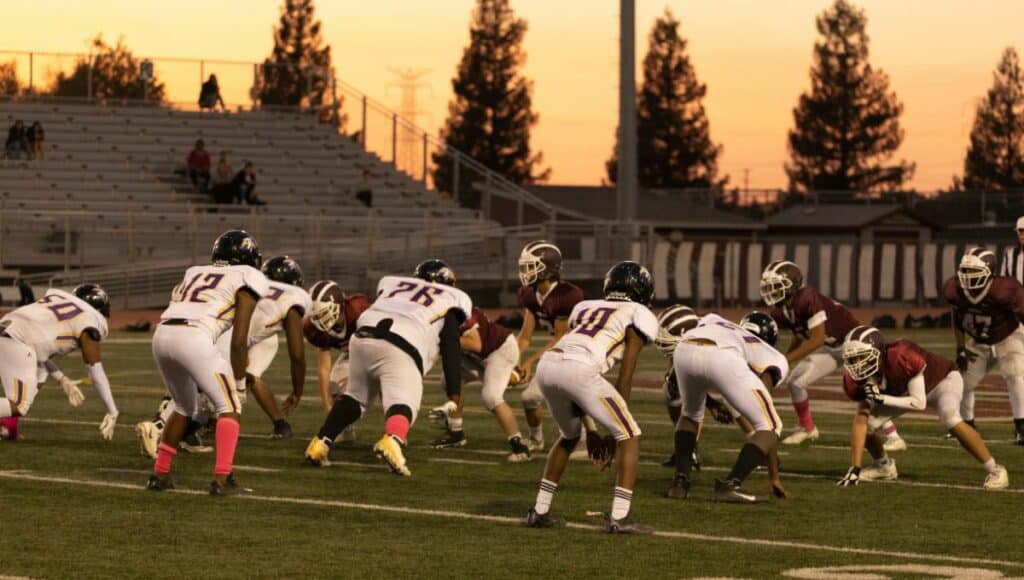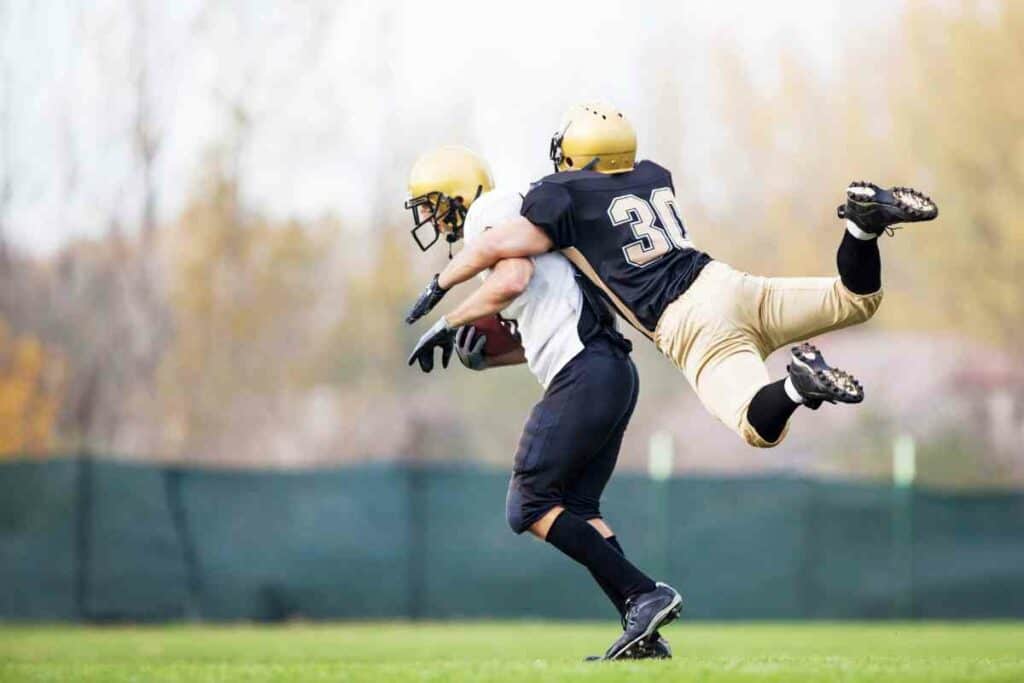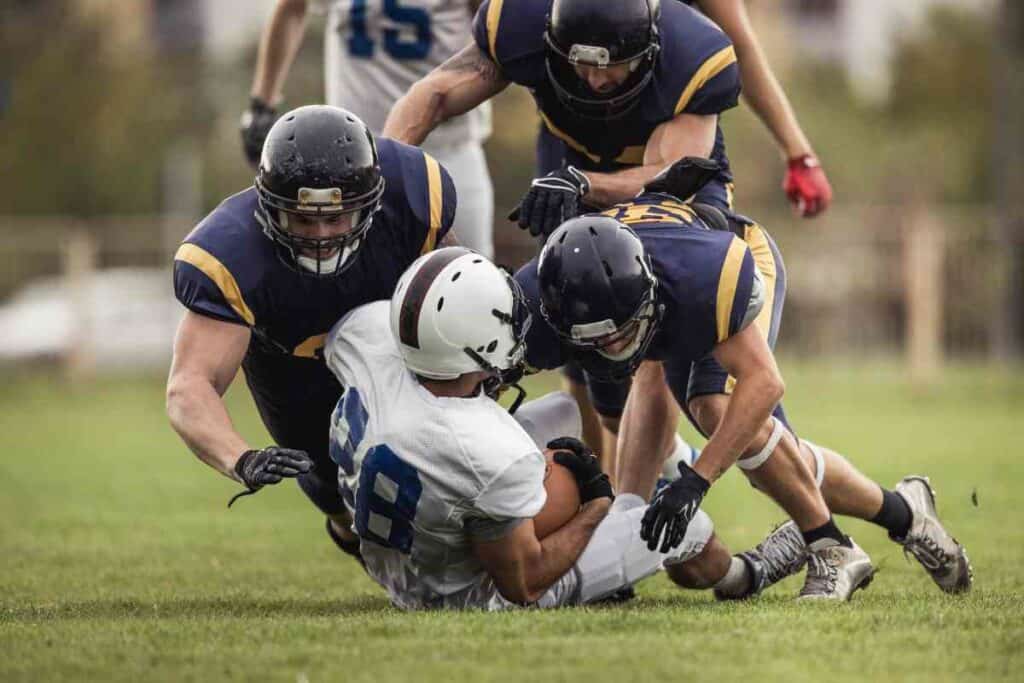How Long Are Junior High Football Games: Duration and Breakdown
Junior high football games serve as a pivotal stage in the development of young athletes, presenting a unique and organized blend of competition and skill building. The duration of these games is a common question among parents, players, and fans of the sport. On average, you can expect a junior high football game to last about one and a half to two hours. This time frame includes four quarters with a halftime break, which is shorter compared to high school football games.

Timing in junior high football is distinct, with each quarter typically lasting around 8 to 10 minutes, varying slightly from league to league. The clock management rules, such as when the clock stops for certain plays, also contribute to the overall length of the game. These games provide a condensed version of the more extended high school and college football games, allowing for plenty of action while respecting younger players’ physical limits and academic responsibilities.
Key Takeaways
- Junior high football game durations average between one and a half to two hours.
- Quarters in junior high games typically range from 8 to 10 minutes.
- The timing structure is designed to accommodate young athletes’ development and academic needs.
Game Structure and Regulations
When you’re watching junior high football games, understanding how the game is structured, from quarter length to specific rules, will help you follow the action on the field.
Quarter Length and Game Duration
Junior high football games are broken down into four quarters. The duration of each quarter typically lasts around 8 to 10 minutes, shorter than NFL quarters which are 15 minutes each.
This results in a total game duration of about 32 to 40 minutes of play time, not including halftime, which is usually a 10 to 15-minute break to allow players to rest.
- 1st Quarter: 8-10 minutes
- 2nd Quarter: 8-10 minutes
- Halftime
- 3rd Quarter: 8-10 minutes
- 4th Quarter: 8-10 minutes
The clock may stop for various reasons such as timeouts, incomplete passes, or when a player goes out of bounds.
Overtime Rules
In the event of a tie at the end of regulation time, junior high football may employ overtime rules to determine a winner.
Unlike the NFL’s sudden death format, junior high overtime often involves each team getting an opportunity to possess the ball with the chance to score; however, the specific rules can vary depending on the league or state.
Specific Rules Variations
Junior high games might have specific rules variations from the NFL to account for the younger age group and developmental focus.
For example, there might be limits on defensive formations to encourage offensive success. Penalties are typically enforced with the aim of maintaining player safety and game fairness.
Some leagues implement a mercy rule, which ends the game if a team is leading by a large margin. This is to maintain sportsmanship and prevent discouragement among players.
Timing and Clock Management
In junior high football, understanding the specifics of timing and clock management is crucial for the flow of the game.
Clock Stop Mechanics
In junior high football, the clock stops for various reasons, including incomplete passes, players running out of bounds, and at the discretion of the officials for certain events like injuries.
These stoppages impact The game length, with the clock being paused until the next snap of the ball.
- Incomplete pass: Clock stops immediately.
- Out of bounds: Clock stops until the ball is re-spotted.
Timeouts and Their Strategic Use
Each team in a junior high football game is typically allotted a set number of timeouts, which lasts around one minute. Timeouts are strategically used to stop the clock, allowing teams to:
- Rest and plan for the next play.
- Preserve time for offense near the end of each half.
- Regroup defensively to prevent scoring.
Impact of Penalties and Delays
Delays of game and penalties such as false starts or encroachments directly influence game timing, often stopping the clock.
These delays can alter the momentum of a game and potentially the standard length of a quarter. Penalties typically result in:
- Clock stop until penalty resolution.
- Potential game lengthening due to repeated infractions.
Gameplay Dynamics
In junior high football games, understanding gameplay dynamics is crucial for spectators and players. It involves recognizing the ebb and flow of offensive and defensive plays, the strategies commonly employed, and the impact of weather and field conditions.
Offensive and Defensive Plays
You witness a strategic chess match between offense and defense during football games. Offense aims to gain yardage and score points by executing plays that involve passing or rushing the ball down the field.
Successfully achieving first downs is a primary objective to sustain drives and control the clock. On the other hand, the defense aims to halt the offense’s progress and attempt to force turnovers.
Defensive strategies may include blitzes to pressure the quarterback or various coverages to prevent receptions.
Common Strategies
Junior high football games often feature a range of common strategies:
- Running Plays: Power running to wear down the defense, using the athleticism of the running back to secure yardage.
- Passing Plays: Implementing short to intermediate passing strategies to advance the ball and outmaneuver the defense.
- Defensive Holds: Defenses employ strategies to prevent offensive gains, where maintaining holding penalties might become a crucial factor.
Each team tailors their strategies, with these dependent on the players’ strengths and the style of play that the coaching staff instills.

Role of Weather and Field Conditions
Weather conditions and field status significantly influence game dynamics. Rain or snow can lead to a slippery field, which typically shifts a team’s tactics to favor the running game and a cautious approach to handling the ball.
Extreme conditions like heat or cold also affect the players’ stamina and performance.
Your awareness of these factors is important, as they dictate not only the style of play but also the effectiveness of the game plan on any given day.
In-Game Adjustments and Player Safety
In junior high football, your awareness of in-game adjustments and player safety is crucial to the well-being of the athletes.
Understanding how injuries are handled, the rationale behind player rotations, and the importance of enforcing mercy rules can greatly influence the safety of the game.
Dealing with Injuries
When injuries occur, the response must be immediate and effective. Trained medical personnel should be present at all games to evaluate and treat any issues.
It’s vital that potential concussions are taken seriously, with players removed from play and assessed according to the established protocols.
Substitutions and Player Rotations
Substitutions and player rotations are key strategies to minimize fatigue that could lead to injuries. This ensures that:
- Players remain fresh and less prone to injury.
- It allows all team members to gain experience on the field.
Referees and coaches work together to manage rotations, ensuring that players do not become overworked during the game.
Enforcing Mercy Rules
Mercy rules protect players from a one-sided game’s physical and psychological toll, especially during playoffs where competition intensity can sky-rocket. These rules typically involve:
- Ending the game when a team has a large and insurmountable lead.
- Shortening quarter lengths when a certain point differential is reached.
This not only prioritizes player safety but also promotes sportsmanship and fair play.
Cultural Impact and Traditions
In junior high football games, traditions and cultural elements shape the experience as much as the game itself.
Pre-Game and Halftime Rituals
Before the game starts, you can witness a variety of rituals that set the tone for the event. Tailgating parties often take place in the parking lots, where families and fans gather to grill and celebrate their team spirit.
Halftime shows provide entertainment through performances by the school’s band or dance teams, keeping the momentum alive and offering a showcase of talent beyond the field.
Role of Fans and Parents
As a fan or parent, your involvement is crucial. Your cheers and encouragement significantly impact the morale of the football team.
Parents often volunteer for support roles, from organizing events to fundraising for uniforms and equipment. Your presence at the games represents both support for the youth and a perpetuation of football culture.
High School Football as a Stepping Stone
For many junior high players, high school football games are seen as a critical step in their development.
Players look forward to the increased competition and exposure, hoping to advance not only in skill but also in forming lifelong values and connections rooted in a tradition of team spirit and community involvement.

Comparisons Across Levels of Play
As you explore football, note that the duration and format of games can vary significantly depending on the level of play.
Junior High vs. High School Football
Junior High football games typically consist of shorter quarters and hence have a shorter overall game time than High School football games.
Where high school games often have 12-minute quarters, you’ll find that Junior High quarters may be reduced to 8 or 9 minutes.
This means a junior high game is generally completed in about 2 hours, while high school games might last closer to 2.5 to 3 hours, not including potential overtime periods.
Differences Between College and NFL Games
When comparing a college football game to an NFL football game, the main differences lie in the clock rules, which can affect game length.
College games feature 15-minute quarters, similar to the NFL, but the clock stops more frequently in college games, such as when a team makes a first down. As a result, college games usually last about 3.5 hours, whereas NFL games average closer to 3 hours.
Additionally, the Super Bowl, often a lengthier event, can extend beyond 4 hours due to the halftime show and increased commercial breaks.
Variations in International Football Games
When you look at international football, specifically Canadian football games, the rules and game lengths differ from American football.
Featuring three downs instead of four and larger fields, Canadian football games have slightly shorter quarters—15 minutes each like the NFL, yet the game flow leads to a faster overall pace.
The result is games that typically finish in about 3 hours, aligning with NFL durations but diverging from the American college football experience.
Related Reading
- How Long Are Football Halftimes
- How Long Do NFL Football Games Last?
- Do College Football Teams Switch Sides At Halftime?
- Here’s How Long Football Games Last!
- How Long Do College Football Quarters Last?
- How Long Do College Football Games Last? A Quick Guide
- Why College Football Games Are So Long
- How Long Do High School Football Games Last?
- How Long Do Arena Football Games Last?
- Do College Football Games Stop for Commercials?
- Why does college football have so many commercials?
Frequently Asked Questions
In this section, you’ll find detailed answers to some of the most common inquiries regarding junior high football game logistics and comparisons with other levels of play.
What is the average duration of a junior high football game?
A typical junior high football game lasts about two hours. This timeframe includes clock stoppages, halftime, and the quarters themselves.
When is the typical end date for the junior high football season?
Your junior high football season generally concludes by early November, depending on the region and school conference schedules.
How long are the quarters in junior high football games in Kentucky?
In Kentucky, the quarters in junior high football games usually span 8 minutes, resulting in a game that’s shorter than the standard high school duration.
Are the dimensions of a junior high football field the same as a professional NFL field?
No, the field sizes may vary. A junior high football field typically has smaller dimensions compared to an NFL field, catering to the participants’ age and skill level.
What are the primary differences between junior high and high school football game durations in Texas?
In Texas, junior high football games are shorter, often with 8-minute quarters, compared to high school games which usually have 12-minute quarters.
How many hours per week are typically dedicated to junior high football practice?
You can expect to dedicate around 10-15 hours per week to junior high football practice, including games, conditioning, and team meetings.
